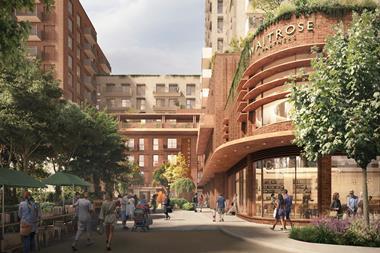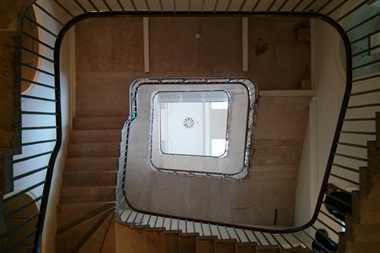Neurodiversity is a term that is increasingly in use these days. But what does it mean and how can the property world support neurodiversity in a meaningful way?

According to Harvard Health, neurodiversity describes the idea that people experience and interact with the world around them in different ways. Examples can include increased introversion or extroversion, hypersensitivity, ADHD, dyslexia or autism.
Based on different studies, between 15% and 20% of the population is neurodiverse. However, workplaces have historically only been designed for neurotypical people. Clearly, if we want to truly tackle diversity and inclusion, we must factor this in.
The recent move to hybrid working has been broadly positive for neurodivergent workers, owing to more time spent in familiar home surroundings and less time facing potential microaggressions during busy commutes. However, more can be done to ensure workspaces cater for neurodivergence.
Colour schemes play a big part. Some neurodivergent individuals see dark welcome mats as a black hole – so at GPE we opt for lighter-coloured mats. Similarly, research reveals that avoiding patterns and bright contrasting colours can help to aid concentration and avoid triggering anxieties.
During fast-paced working days, wellness rooms can be beneficial for customers. Whether it’s spaces that allow people to spend time alone or pray or give expectant mothers the chance to rest, these spaces can really make customers feel at home. Equally, gym spaces to encourage exercise through to polices that allow people to bring their pets into work with them can help to support people’s individual needs and comfort levels.
While the headlines often focus on today’s office as a place to collaborate, not everyone comes in for this reason, and more introverted individuals will value the opportunity to find their own space. It’s important there are quiet breakout spaces within fitted and fully managed buildings that support solitude and encourage ‘deep work’, featuring, for example, subtle background sounds, good acoustics, lower lighting and furniture layouts that signal lone working is the purpose.
Conversely, collaboration, connection and higher-energy spaces must also be factored in, as some extroverted individuals will perform best in these environments. Traits can include subtle yet more up-tempo background music, touchdown benches and booths that support group activities. Tea points that act as hubs may provide ‘water-cooler’ moments and serendipitous encounters that many miss when working from home.
Prioritising customers
The reality is that some people will enjoy both types of spaces at different times. Neurodiversity is anything but straightforward, so the key is how to effectively zone spaces, giving everyone access but providing the right level of separation to ensure the working environments feel different while genuinely serving their purpose.
This is where property owners should prioritise their customers, as their feedback is key and needs will change all the time.
It is a fascinating and evolving journey, so as an industry we must continue to grow our knowledge. There are fantastic organisations to partner with that specialise in neurodiversity, including Purple and Sunflower, which provide guidance on hidden disabilities.
GPE is also proud to be SEND Coffee’s first corporate partner, which has already been impactful for both parties. The lessons from these partnerships are invaluable, as we as a sector must learn and embed their experiences and expertise into our own thinking and operations.
Jack Kelly is flex customer lead at GPE






























No comments yet